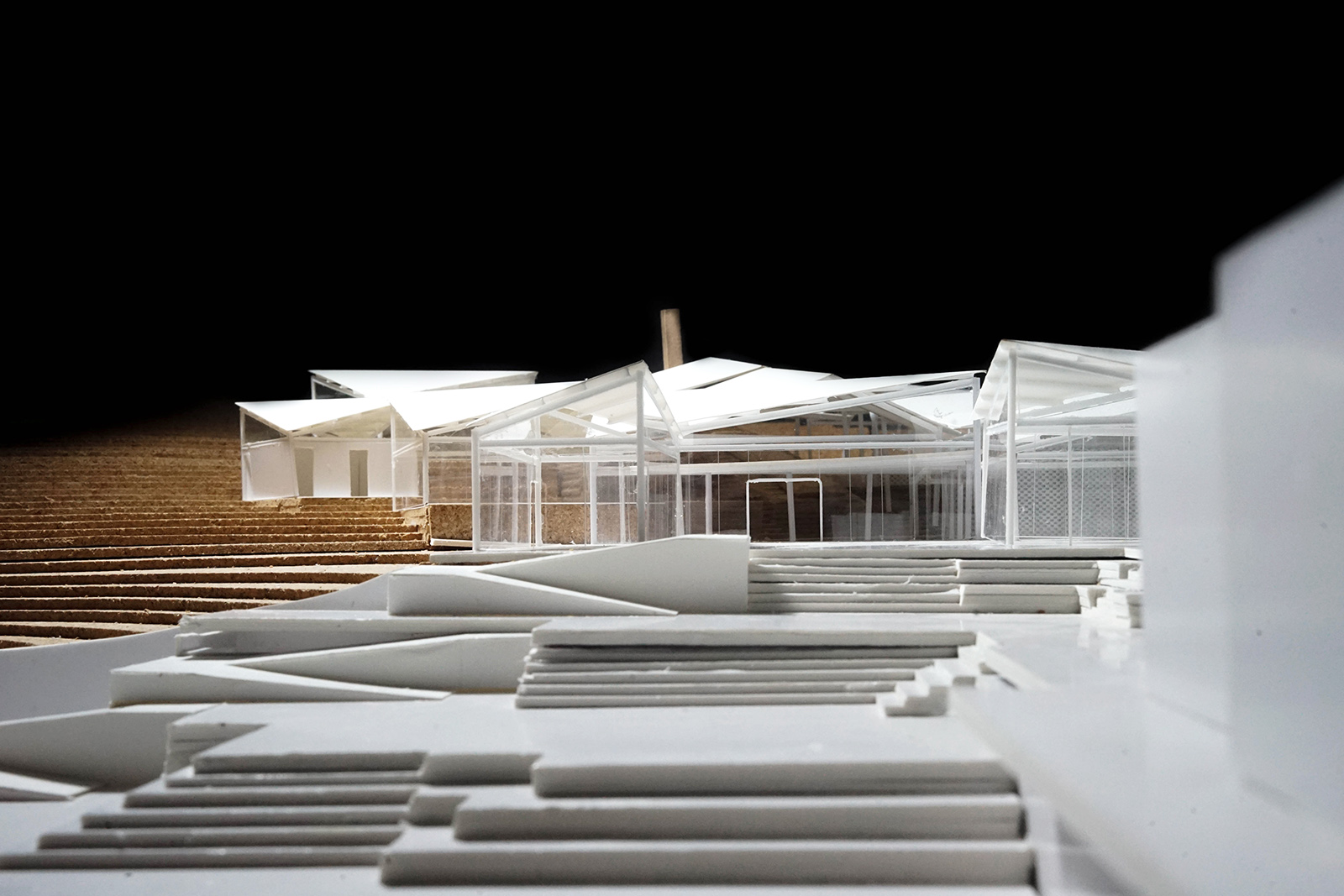
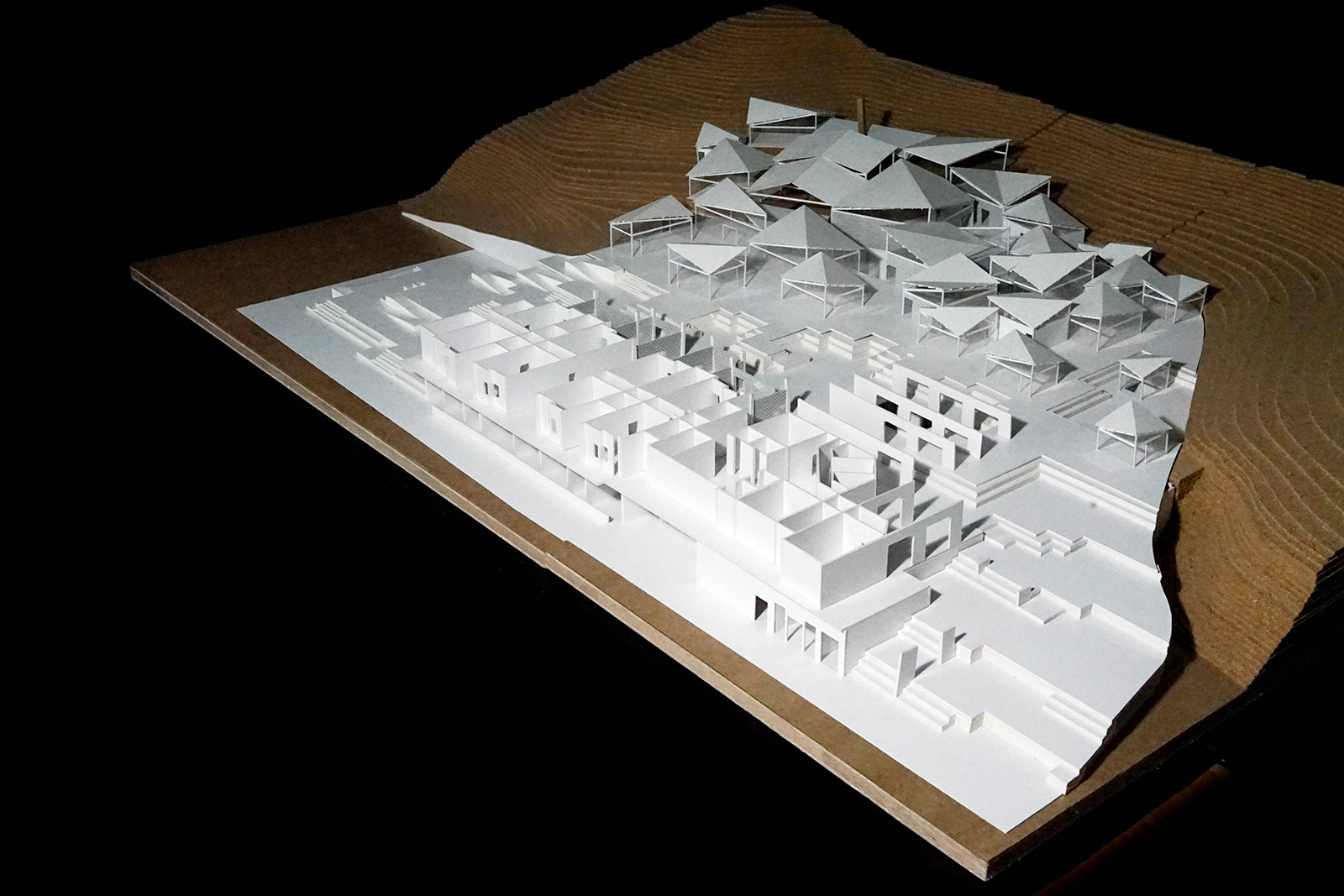
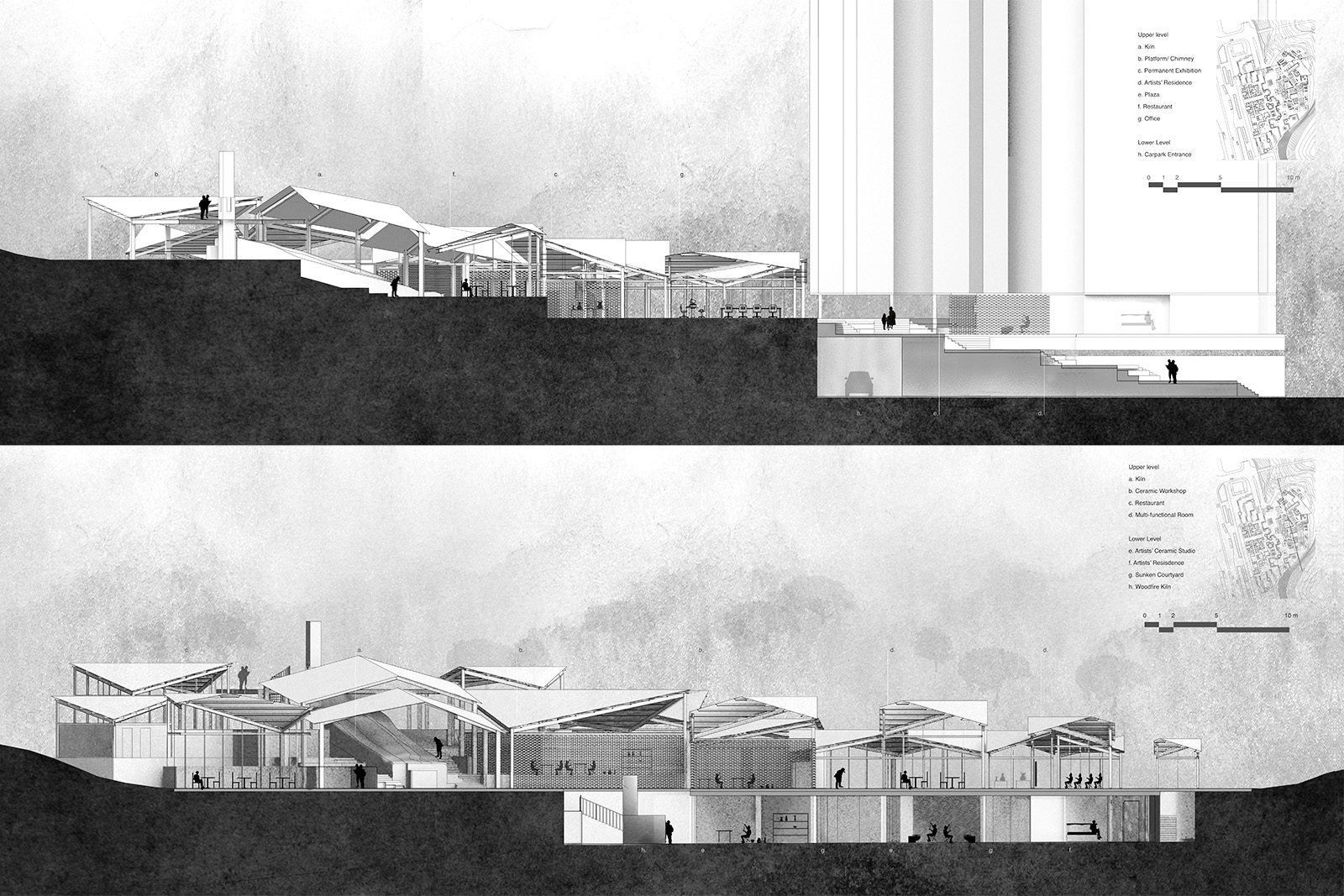
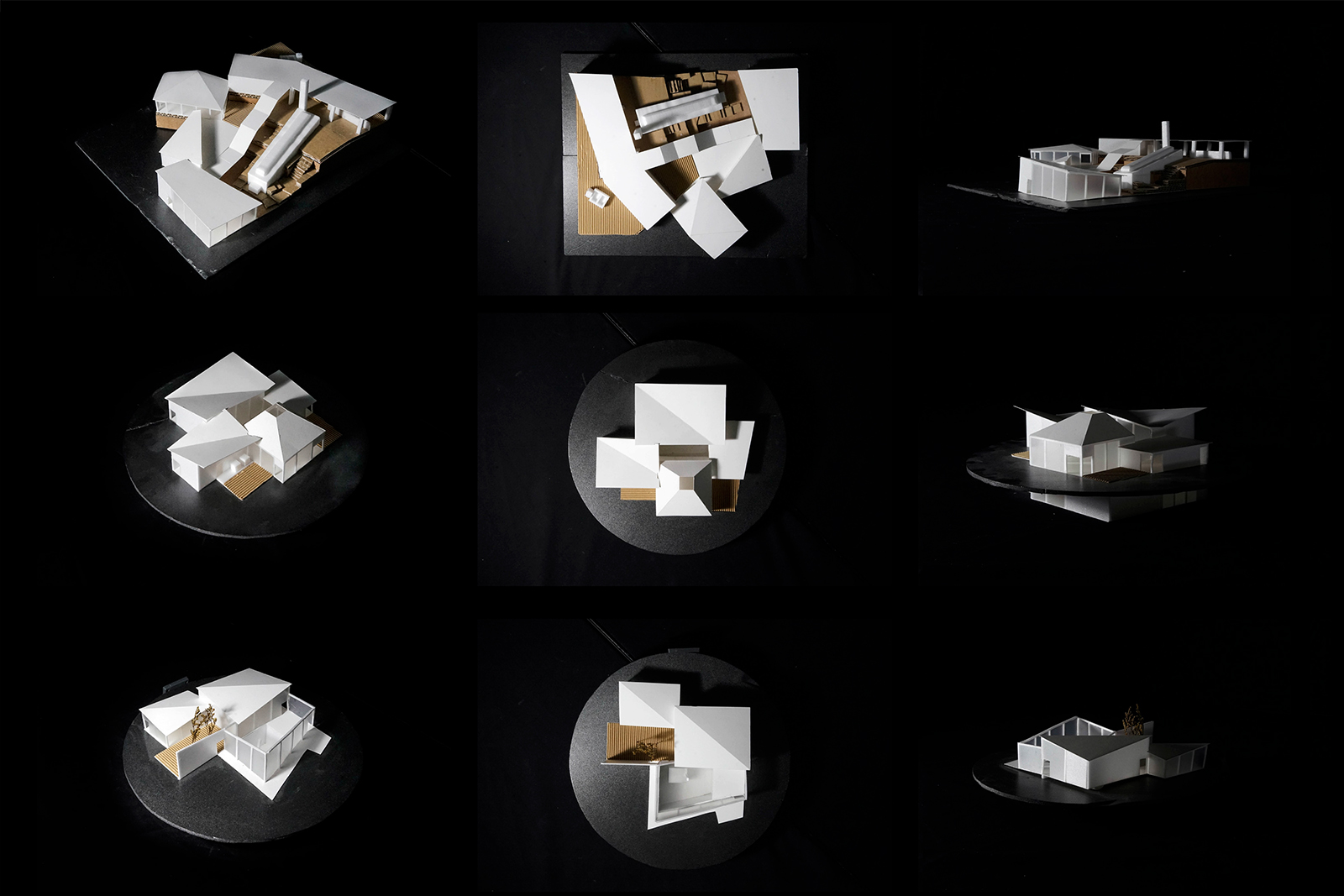
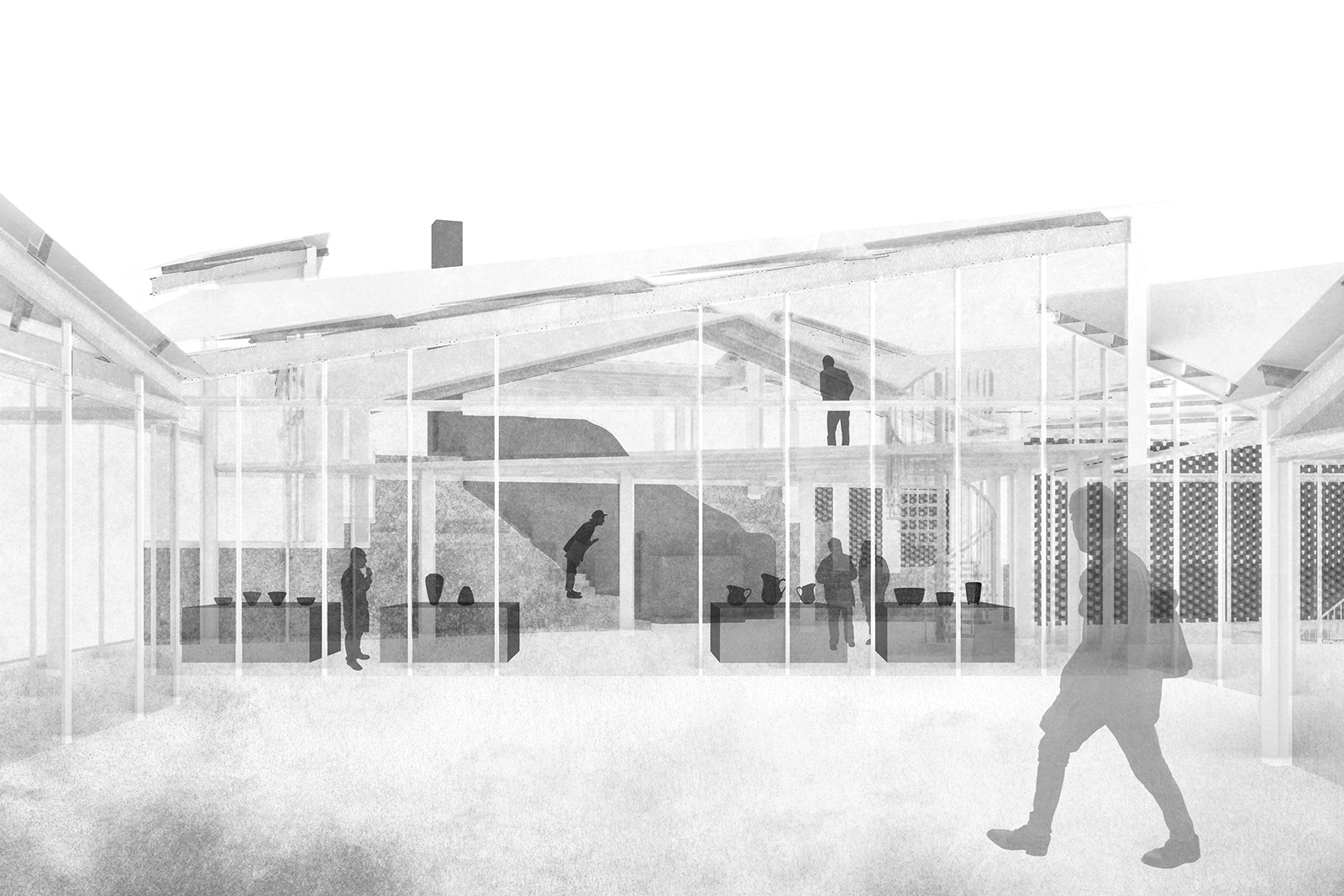
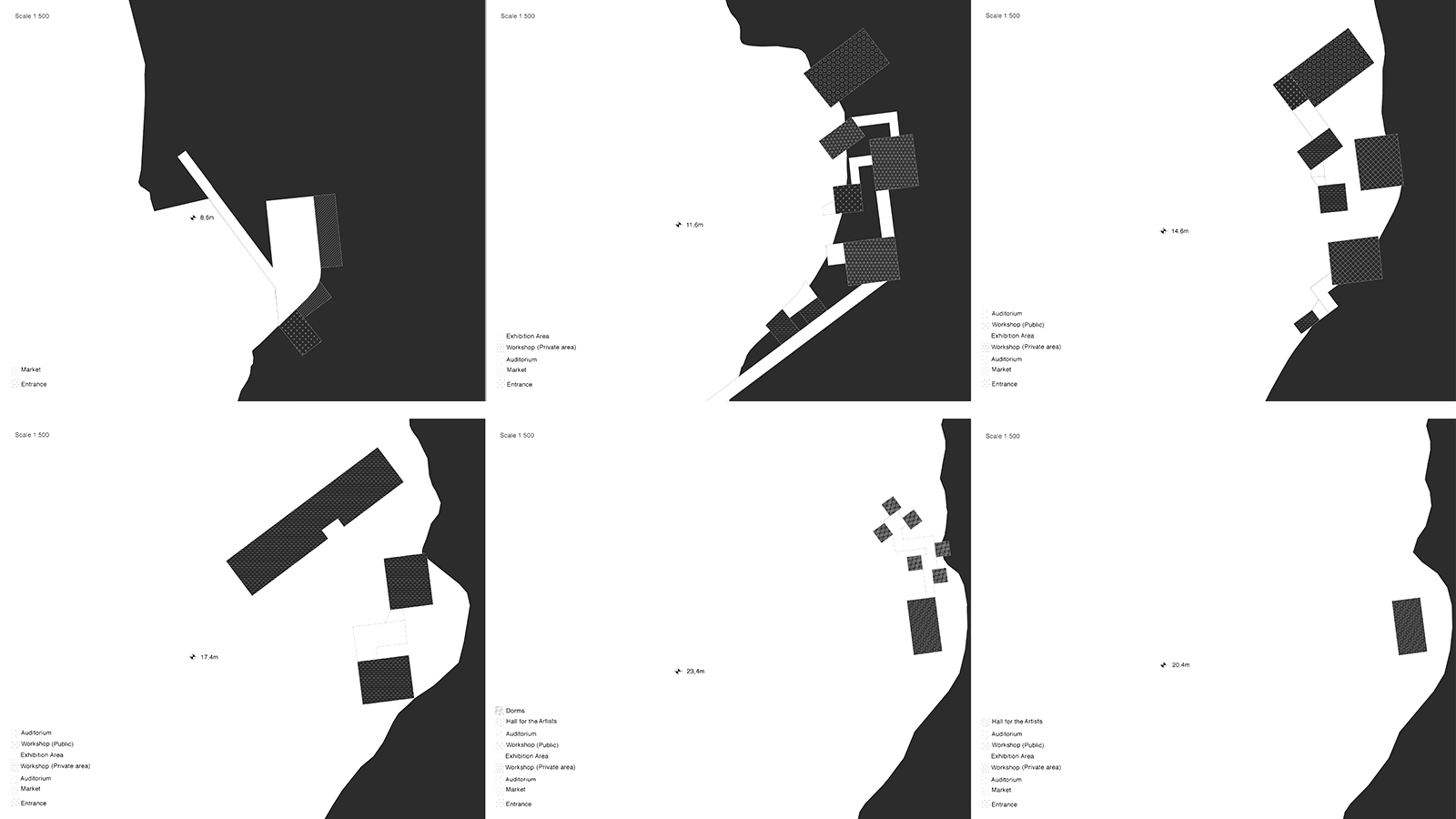
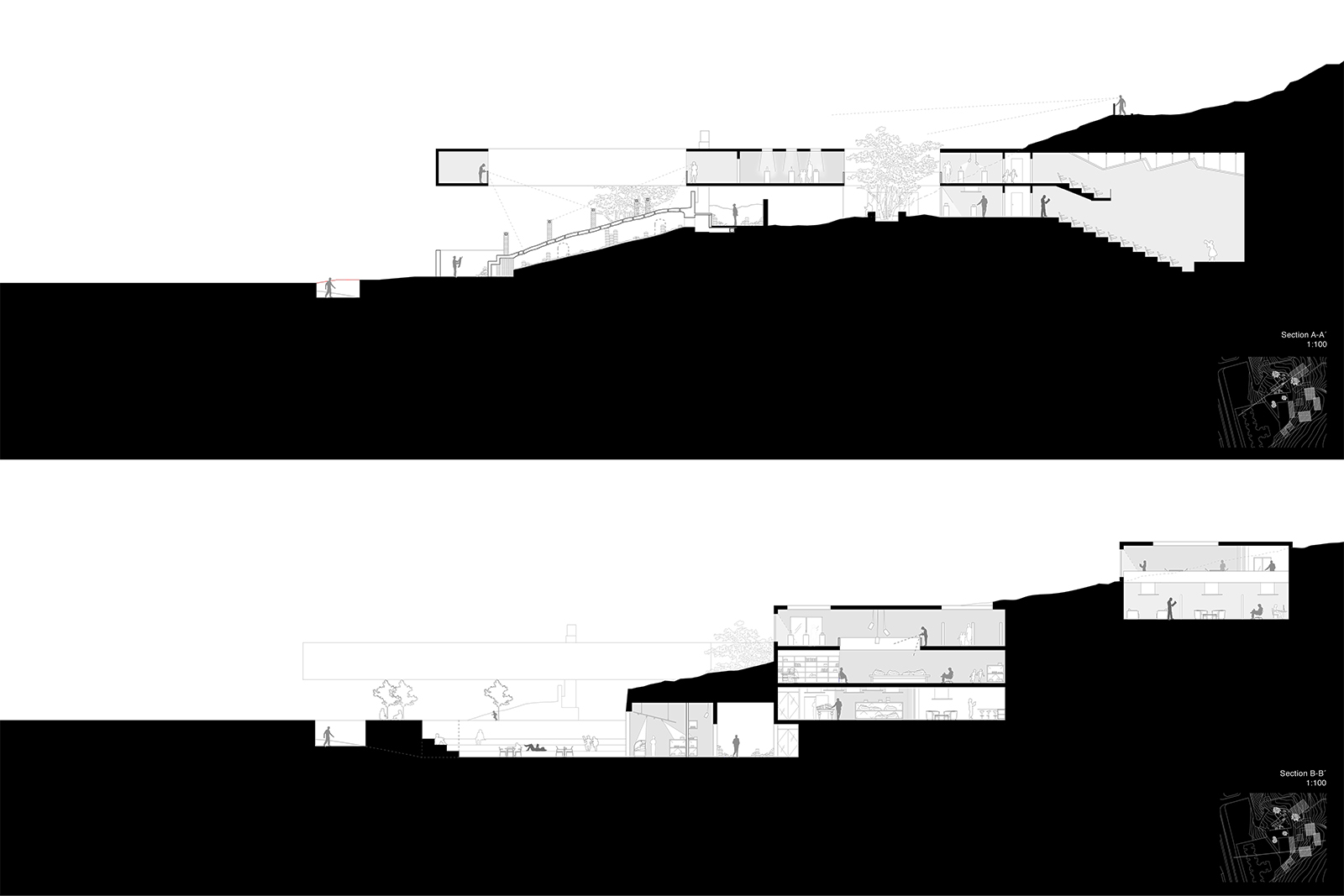
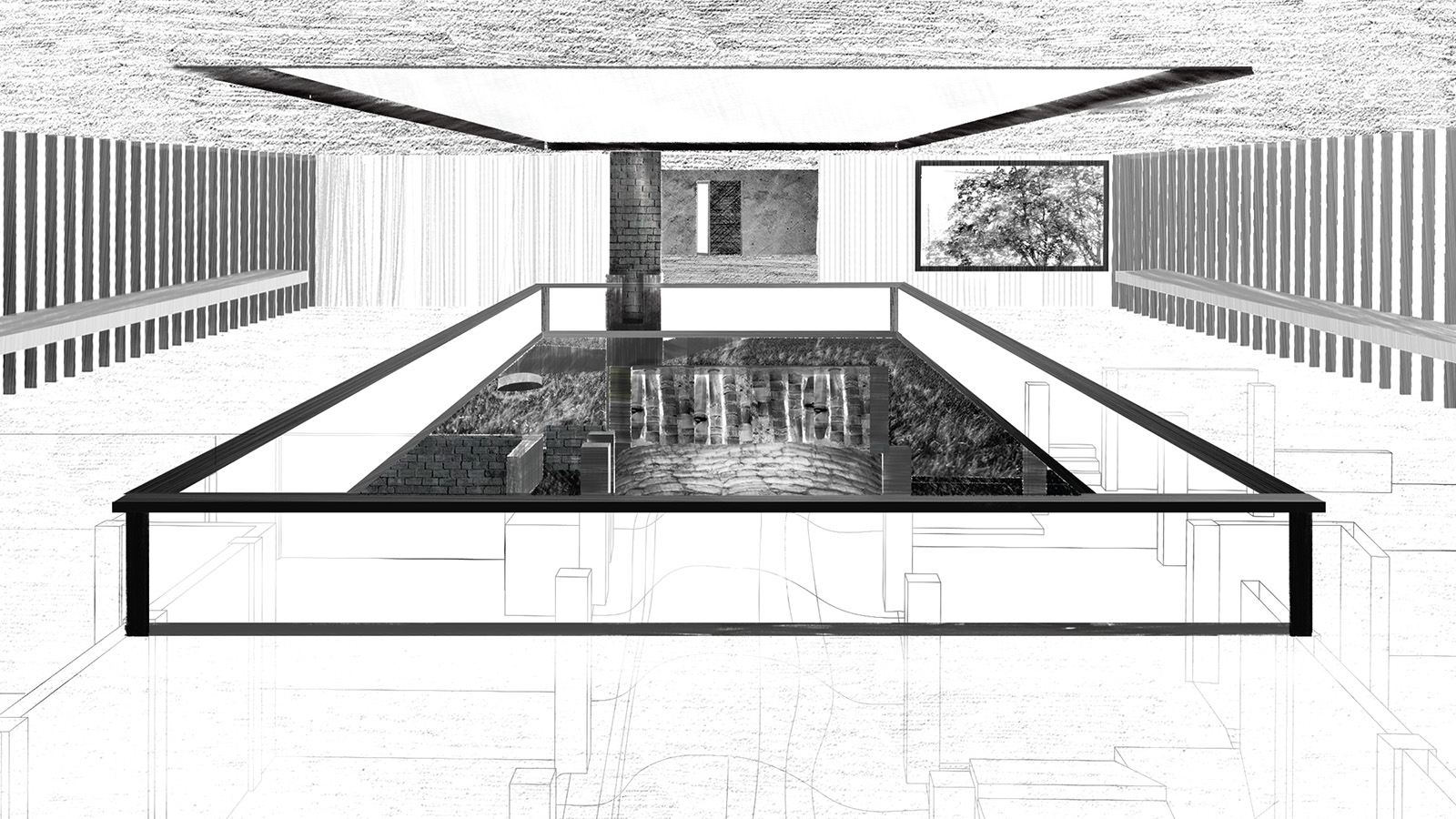
Architecture Design Year 3 Studio 2018-19 Semester 2, HKU
Studio Title Revitalizing Castle Peak Pottery Kiln: the Transformation into a Living Museum
Image Credits Henry Chung & Owen Miu (01-05), Norma Perez & Crystal Yu (06-08)
Background
Dragon kiln, a traditional wood fire kiln, is one of the best and oldest technologies for firing ceramics at high-temperatures. Invented in China during the Han dynasty, they are still in use in many countries where ceramics are highly valued. In China, the most famous kilns are located in Jingdezhen. Not even the most modern and expensive electric or gas kiln can reproduce the same effects on ceramic wares as a traditional wood fire kiln.
Dragon kiln consist of one long brick chamber, where the wares to be fired are positioned, before undergoing a wood firing – a type of ceramic production that creates beautiful, natural glazes. These kilns are built on a slope: as the heat moves upwards, temperatures in the sealed chamber can reach up to 1300 degrees Celsius.
Being constructed in the 1940s, the Castle Peak Pottery Kiln is the only complete and intact dragon kiln remaining in Hong Kong. A pottery craftsman Leung Sum took over the kiln in 1951. Having started making pottery in Shiwan, Guangdong province since the age of 8, Mr Leung came to Hong Kong in 1949 when the pottery industry in Shiwan underwent a downsizing. He at first worked as a foreman at the kiln, but later in 1951, he bought the kiln. Under the management of the Leung family, the kiln produced a variety of household ceramic items such as cooking utensils, flower pots, small saucers for lighting oil, traditional Chinese money boxes which were sold to Kowloon, Hong Kong Island and elsewhere in the territory.
Due to the competition from the cheaper products from other parts of Asia, the business gradually diminished. The kiln ceased industrial operations in the late 70s, but in 1982 – when Edward Youde was Governor – it was earmarked as a potential “Working Museum” when Dr. Solomon Bard, the first Executive Secretary of the Antiquities and Monuments Office, was struck by the kiln’s uniqueness and rarity. Initial plans to turn it into a “Working Museum” were dropped, but the site was designated as one of archaeological interest in 2012, and then again in 2014 when it was granted Category III Grading. However since 2017, the government has initiated a proposal to change the uses of the land surrounding the kiln and make it part of the future housing development. This has placed the Dragon Kiln under direct threat due to the uncertainty of potential damage by the housing construction. The loss of the surround open space also makes the revitalization much more difficult.
In order to conserve and revitalize the Dragon Kiln, and promote public awareness, engagement and education, Hong Kong Dragon Kiln Concern Group has been formed to seek for better solutions and urge the government to rethink its development plan. Taking the view points, comments and suggestions from the Group as the points of departure, this studio aims at exploring the potential and opportunities to transform the Dragon Kiln into a living museum and ceramic community center.
Site and Program
The Dragon Kiln is located at Hin Fat Lane, Tuen Mun, off Castle Peak Road. It is right on the edge between urban development and natural landscape where various large residential and school developments are located at the west of the site and a vast green open space with slopes and dense vegetation at the east. The twenty meter long kiln structure run along the 15 degree slope from west to east. A timber frame roof structure was constructed to protect the kiln as temporary shelter. A large flat open space is located at the south of the kiln. However, if Planning Department’s change of land use proposal is approved, this open space will become part of the public housing development. At the south west corner of the site, the abandoned Pui Oi School building will be demolished for proceeding the housing development project.
Students are required to propose an approximately 5000m2 architectural compound including a museum showcasing the history of Dragon Kiln, a ceramic community center (with workshops and artist residence) promoting the art of ceramic making, a permanent shelter to ensure the sound operation of the kiln, and an outdoor activity area opens to public. Other program types could be considered according to each individual design concept.